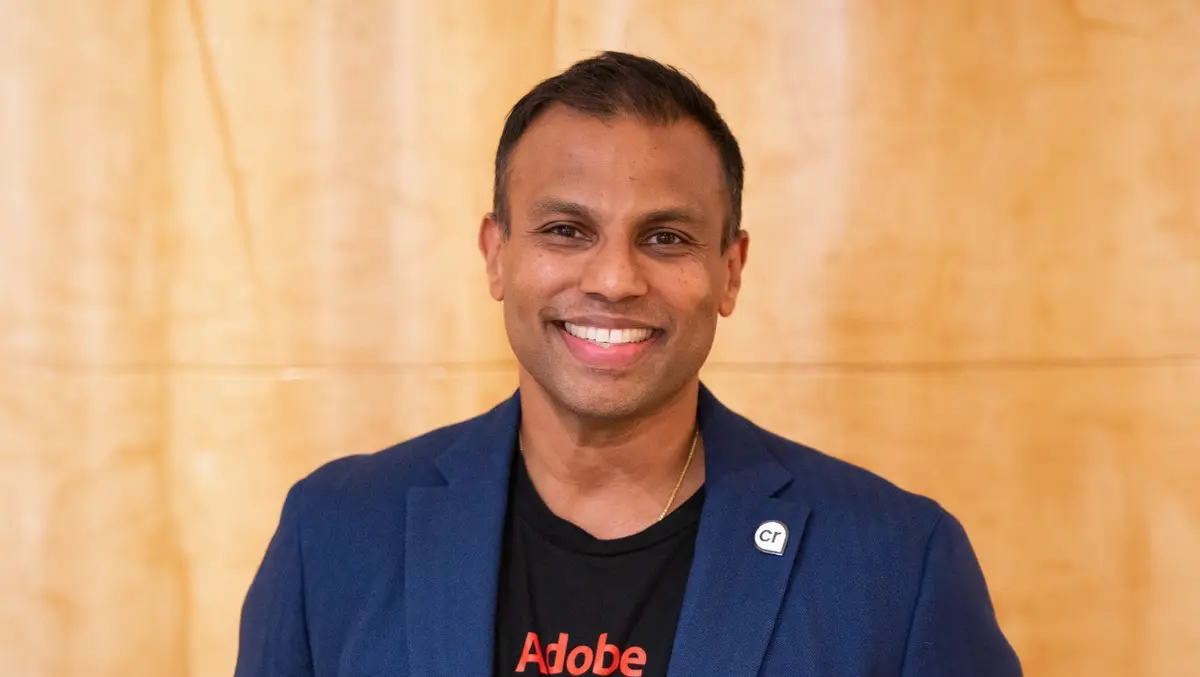
Adobe's Chandra Sinnathamby discusses responsible AI innovation
In a world where artificial intelligence (AI) is advancing at a mind-boggling speed, Adobe has taken a deliberate and thoughtful approach to ensure that innovation is responsible, transparent, and trustworthy.
During an interview with TechDay, Digital Media Strategy and GTM Director at Adobe Asia Pacific, Chandra Sinnathamby, highlighted the company's commitment to these principles.
Adobe launched its generative AI platform, Firefly, around 18 months ago - a move that Sinnathamby described as a "significant milestone" in the company's journey towards integrating AI across its flagship applications.
"We've seen really strong momentum," Sinnathamby stressed, highlighting that Firefly has already generated over nine billion images.
This success reflects the company's strategy of embedding AI not only into creative tools like Photoshop and Illustrator but also into solutions for non-creatives, such as Adobe Express and Acrobat.
One of the key aspects of Adobe's approach to AI is its focus on responsible innovation. "For the technology to be adopted, it's super critical that you have a lot of trust in the technology," Sinnathamby explained. He emphasised that Adobe has made it a priority to ensure that its AI tools are designed and deployed in ways that build trust and promote transparency.
Central to this approach is Adobe's AI ethics review process, which Sinnathamby described as a rigorous end-to-end review that every AI feature must undergo before it is released. "We like to say from the thought bubble, it goes into a discussion with a very diverse body of people within the company," he said. This includes a diverse group of executives, engineers, lawyers, and salespeople who assess the potential societal impacts of new AI features.
A cornerstone of Adobe's responsible innovation strategy is its decision to train Firefly on Adobe's own assets or those in the public domain, where copyright has expired. This decision, Sinnathamby acknowledged, was a strategic trade-off that could have slowed the platform's time to market. However, he firmly believes it was the right choice, particularly in terms of protecting intellectual property rights and ensuring that Adobe's AI tools remain commercially safe.
"We think that's going to, and it has, given us a competitive advantage," he said.
Transparency is another critical component of Adobe's AI strategy. Sinnathamby highlighted the company's involvement in global initiatives aimed at improving the transparency of digital content. One such initiative is the Coalition for Content Provenance and Authenticity (C2PA), which defines technical standards for content provenance technologies. Adobe also co-founded the Content Authenticity Initiative (CAI) with The New York Times and Twitter (now known as X) to promote transparency in digital content.
"We believe this strong approach allows us to responsibly develop the right solutions for our customers and help them deliver great personalised experiences."
One of the key tools Adobe has developed to support transparency is the content credential, which Sinnathamby likened to a nutritional label on food items. "A content credential tells you who created the asset, what technology was used, when it was made, and if AI was used in any part of the process," he explained. This allows consumers to make informed decisions about the content they consume, particularly in an era where misinformation and disinformation are prevalent.
Sustainability is "top of mind" Adobe as it continues to expand its AI capabilities.
Sinnathamby acknowledged the growing concern about the environmental impact of generative AI, particularly in terms of energy consumption. He pointed out that Firefly is powered 95% by renewable energy, and Adobe is working closely with its infrastructure providers to continuously reduce its energy footprint.
Looking ahead, Sinnathamby hinted at exciting developments on the horizon for Adobe's AI capabilities, including the introduction of text-to-video features. "What's really exciting is what lies ahead," he shared.
Despite the rapid pace of innovation, Adobe remains committed to ensuring that its AI tools are used responsibly and ethically. Sinnathamby stressed that this commitment extends beyond the company's own products to include broader industry initiatives aimed at addressing some of the biggest challenges posed by AI, such as concerns about copyright and the spread of deepfakes. "We're trying to get out ahead and come up with solutions."
As AI continues to reshape the creative and marketing industries, Adobe's focus on responsible innovation, transparency, and sustainability positions it as a leader in this rapidly evolving field.
"We know we can put this thing out tomorrow," Sinnathamby said, "but what are the safety valves that we need to put in place so that when this thing goes out, we are making sure we keep people safe first and foremost?"
For Adobe, the future of AI is not just about what can be done, but about what should be done. As Sinnathamby put it, "It's about being commercially safe and making sure that our customers can adopt these new technologies with confidence and trust."


